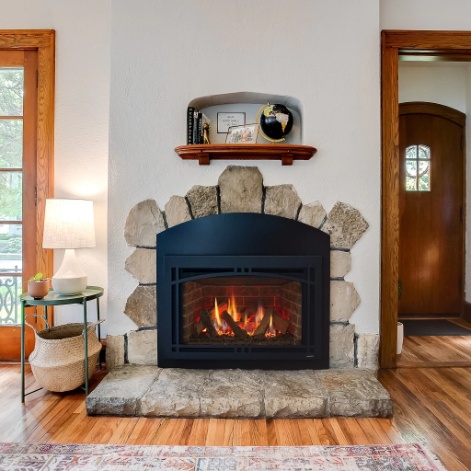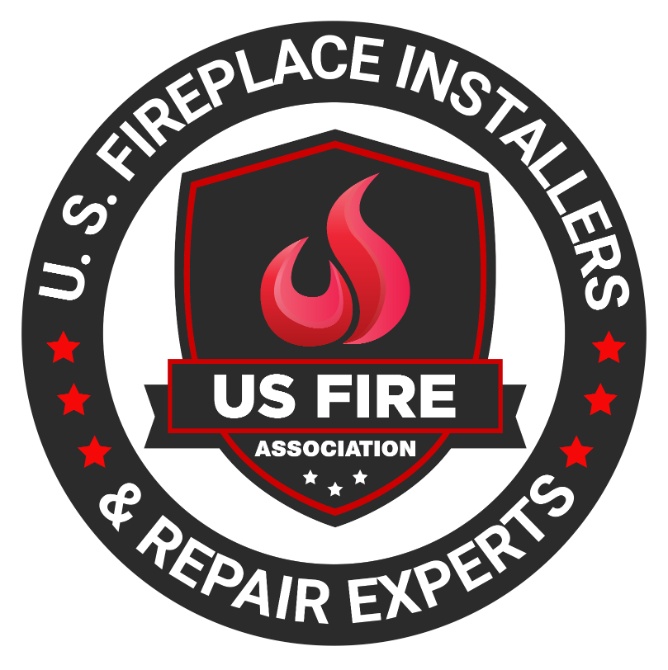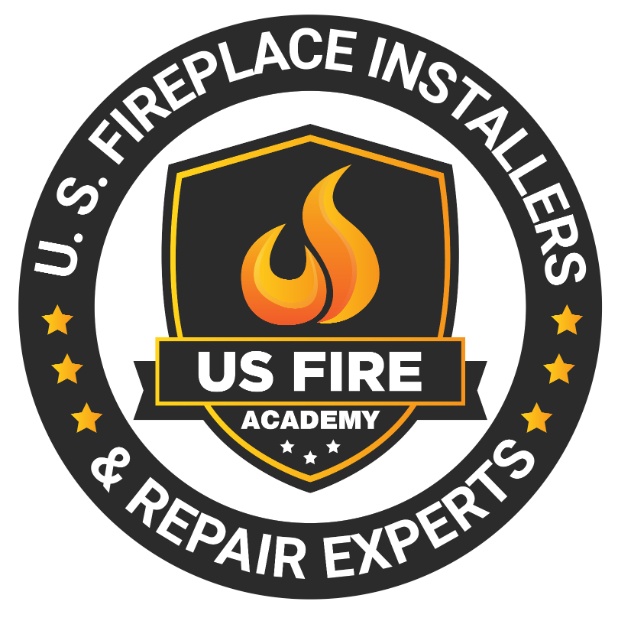Table of Contents
- 1 What is Carbon Monoxide?
- 2 What are the Sources of Carbon Monoxide?
- 3 What is a Carbon Monoxide Detector?
- 4 How Does a Carbon Monoxide Detector Work?
- 5 Why Do I Need a Carbon Monoxide Detector with My Fireplace?
- 6 How Do I Choose the Right Carbon Monoxide Detector for My Fireplace?
- 7 Where Should I Place My Carbon Monoxide Detector?
- 8 How Often Should I Test and Replace My Carbon Monoxide Detector?
- 9 What Should I Do if My Carbon Monoxide Detector Goes Off?
- 10 How Can I Prevent Carbon Monoxide Poisoning from My Fireplace?
- 11 Frequently Asked Questions
Curled up by a cozy fireplace, sipping on hot cocoa, the last thing on your mind may be carbon monoxide poisoning. Do you need a carbon monoxide detector when you have a fireplace?
This silent, odorless gas can pose a serious threat, especially when using a fireplace.
Learn about the sources of carbon monoxide, the importance of having a detector with your fireplace, how to choose the right one, placement tips, testing frequency, and what to do in case of an alarm.
Stay informed and keep your home safe!
What is Carbon Monoxide?
Carbon monoxide is a colorless, odorless gas that poses a serious threat to household safety. It is produced by the incomplete combustion of gas and fuels in household appliances, leading to potential risks of poisoning. This gas can be extremely toxic when inhaled, causing a range of health hazards.
Symptoms of carbon monoxide exposure include headaches, dizziness, nausea, confusion, and fatigue, often mistaken for the flu. Prolonged exposure can lead to more severe outcomes, including unconsciousness and even death. This silent killer is especially dangerous in enclosed spaces like homes where ventilation may be insufficient.
Installing carbon monoxide detectors in key areas of the house, such as near bedrooms and kitchen areas, is vital to alert occupants of any dangerous levels. Regular maintenance of gas appliances and proper ventilation practices are crucial for preventing carbon monoxide buildup.
What are the Sources of Carbon Monoxide?
The primary sources of carbon monoxide in homes are gas appliances such as furnaces, water heaters, and stoves that rely on the combustion process to function. Improperly maintained chimneys or blocked ventilation systems can also contribute to the buildup of carbon monoxide indoors.
It is essential for households to understand that these gas-fueled appliances, if not properly installed or maintained, can release dangerous levels of carbon monoxide.
Chimneys play a crucial role in safely expelling combustion byproducts, including carbon monoxide, outside the home. Ensuring that chimneys are clear of obstructions and functioning correctly is vital for preventing carbon monoxide infiltration. Adequate ventilation, both natural and mechanical, is key in allowing carbon monoxide to dissipate harmlessly.
Regular inspections, maintenance, and compliance with safety standards can significantly reduce the risk of carbon monoxide leaks, safeguarding the well-being of occupants.
What are the Common Sources in a Home?
Common sources of carbon monoxide in a home include gas furnaces, water heaters, stoves, and fireplaces, all of which rely on combustion processes. Improper ventilation, blocked chimneys, or inadequate maintenance of these appliances can increase the risk of carbon monoxide leaks.
These gas appliances are standard in many households, providing essential functions such as heating, cooking, and hot water. Gas furnaces operate by burning fuel to generate heat, water heaters use gas to heat water for domestic use, stoves rely on gas combustion for cooking meals, and fireplaces burn gas for warmth and ambiance.
Ensuring that these appliances are properly maintained and adequately ventilated is crucial for preventing the buildup of carbon monoxide, a colorless and odorless gas that can be highly dangerous if inhaled in high concentrations.
What is a Carbon Monoxide Detector?
A carbon monoxide detector is a safety device designed to alert occupants of a home to the presence of dangerous levels of carbon monoxide gas. It functions by monitoring the air for the gas and triggering an alarm to warn individuals of potential exposure.
These detectors are crucial in preventing carbon monoxide poisoning, as this colorless, odorless gas can be deadly when inhaled in high concentrations. The detectors typically use sensors to detect the gas in the air, with different models offering varying levels of sensitivity. With the ability to detect low levels of carbon monoxide early on, these devices provide valuable time for occupants to evacuate and seek medical assistance before serious health effects occur.
How Does a Carbon Monoxide Detector Work?
Carbon monoxide detectors operate using advanced detection technology that can sense the presence of the gas in the air. When elevated carbon monoxide levels are detected, the device emits a warning signal, alerting occupants to a potential gas leak and the need for immediate action.
This detection technology typically involves electrochemical sensors that react to carbon monoxide molecules in the air. Once these sensors come into contact with the gas, they trigger a process that sets off the alarm. This rapid response is crucial in ensuring the safety of individuals by providing early alerts before the gas reaches dangerous levels. By promptly signaling the presence of carbon monoxide, these detectors play a vital role in averting potential health risks and preventing carbon monoxide poisoning incidents.
Why Do I Need a Carbon Monoxide Detector with My Fireplace?
A carbon monoxide detector is essential when using a fireplace to detect any potential gas fumes or carbon monoxide emissions. Fireplaces can be a source of carbon monoxide buildup, posing a significant fire hazard and health risk to occupants.
Carbon monoxide is a colorless, odorless gas that can be deadly if inhaled in high concentrations. The danger lies in the fact that it’s virtually undetectable without a specialized detector. This is particularly concerning in the case of fireplaces, where incomplete combustion of fuel can lead to the release of this toxic gas. Early detection through a carbon monoxide detector is crucial to ensure the safety of those in the vicinity and prevent potential health complications or even fatalities.
What are the Dangers of Carbon Monoxide from a Fireplace?
Using a fireplace without proper ventilation or monitoring for carbon monoxide can lead to dangerous levels of this gas accumulating in the home. The resulting health risks, including carbon monoxide poisoning, and the fire hazard posed by uncontrolled emissions necessitate stringent safety measures.
Carbon monoxide is a silent killer, as it is colorless and odorless, making it extremely difficult for occupants to detect its presence. Without proper precautions, individuals in the household can experience symptoms such as headaches, dizziness, nausea, and even death from prolonged exposure to high levels of carbon monoxide.
The risk of fires breaking out due to the buildup of this poisonous gas adds another layer of danger. To safeguard against these threats, it is crucial to install carbon monoxide detectors in key areas and conduct regular maintenance on both the fireplace and the detectors for optimal functioning and early detection.
How Do I Choose the Right Carbon Monoxide Detector for My Fireplace?
Selecting the appropriate carbon monoxide detector for your fireplace involves considering factors such as the detector’s placement, functionality, and compatibility with gas appliances. Proper installation according to safety guidelines is crucial to ensure effective monitoring.
When choosing a carbon monoxide detector for use with your fireplace, it’s essential to select one that can detect even low levels of CO to ensure early detection of potential leaks. Consider a detector that is battery-operated or has a backup power source to maintain functionality in case of power outages. Ensure the detector is placed at a suitable height and distance from the fireplace to effectively detect any CO emissions. Following the manufacturer’s installation instructions will help optimize the detector’s performance and provide reliable safety measures for your home.
What Features Should I Look for in a Carbon Monoxide Detector?
When choosing a carbon monoxide detector, it is essential to look for features such as a reliable detection system that meets safety standards and regulations. Ensuring the detector’s accuracy and responsiveness is crucial for effective monitoring.
Opting for a detector equipped with advanced sensor technology can provide real-time monitoring and instant alerts in case of any CO presence. Considering detectors with backup power sources, like batteries, ensures continuous functionality during power outages. Look for models with digital displays or smart features for easy reading and remote access to monitor CO levels. Some detectors also offer interconnected capabilities, allowing multiple units to communicate and sound alarms simultaneously throughout the premises for enhanced safety.
What Types of Carbon Monoxide Detectors are Available?
There are several types of carbon monoxide detectors available, including plug-in, battery-operated, and hardwired models. Each type utilizes different detection methods to raise awareness of elevated carbon monoxide levels and ensure prompt action.
Plug-in carbon monoxide detectors are convenient as they can be easily plugged into any outlet, providing continuous monitoring. Battery-operated models offer flexibility by functioning even during power outages, making them reliable in emergencies. On the other hand, hardwired detectors are directly connected to the electrical system, offering seamless integration for consistent monitoring. Regardless of the type, carbon monoxide detectors play a crucial role in alerting individuals to dangerous levels of this odorless gas, enabling them to take necessary precautions to prevent carbon monoxide poisoning.
Where Should I Place My Carbon Monoxide Detector?
Positioning your carbon monoxide detector strategically is crucial for effective monitoring. Install detectors near potential sources of carbon monoxide, such as gas appliances, ensuring proper ventilation and coverage throughout your home.
Consider placing detectors in key areas like bedrooms and hallways to provide comprehensive coverage in case of a carbon monoxide leak. Remember to test your detectors regularly and replace batteries as needed to ensure they are functioning properly. It is also advisable to have multiple detectors on different levels of your home to increase the chances of early detection. By following these guidelines, you can help protect your household from the silent threat of carbon monoxide poisoning.
How Often Should I Test and Replace My Carbon Monoxide Detector?
Regular testing of your carbon monoxide detector is essential to ensure its functionality and reliability. It is recommended to test the detector monthly and replace its batteries annually to maintain continuous safety precautions.
Testing your detector regularly not only helps in early detection of potential gas leaks but also ensures that it remains in proper working condition. By testing monthly, you can promptly address any issues that may arise and avoid the risk of malfunction during emergencies. Replacing the batteries annually is crucial in guaranteeing that your detector functions optimally. This simple routine can significantly contribute to safeguarding your home and loved ones from the dangers of carbon monoxide exposure.
What Should I Do if My Carbon Monoxide Detector Goes Off?
If your carbon monoxide detector alarm activates, it is crucial to respond promptly with an emergency plan. Evacuate the premises, call emergency services, and conduct a risk assessment to identify the source of the carbon monoxide leak.
Ensure all individuals in the vicinity are evacuated to a safe location away from the affected area. Contact authorities immediately to report the alarm and seek further assistance.
Once outside, take deep breaths of fresh air and avoid re-entering the building until it has been declared safe. Upon investigating the potential source of the leak, refrain from turning on any lights, as this could potentially ignite any accumulated gases.
Remember that carbon monoxide is a silent and odorless threat, requiring swift and decisive action to ensure everyone’s safety.
How Can I Prevent Carbon Monoxide Poisoning from My Fireplace?
Preventing carbon monoxide poisoning from your fireplace involves practicing safe usage and implementing effective safety measures. Ensure proper ventilation, regular maintenance, and the installation of carbon monoxide detectors to mitigate the risks associated with fireplace emissions.
Proper ventilation is crucial to ensure that any carbon monoxide produced by the fireplace is effectively vented outside, preventing its buildup indoors. Regular maintenance, such as cleaning the chimney and checking for blockages, helps ensure that the fireplace operates efficiently and reduces the risk of carbon monoxide leaks. Installing carbon monoxide detectors in key areas of your home provides an added layer of protection by alerting you to any dangerous levels of this colorless, odorless gas in the air.
Frequently Asked Questions
1. What is carbon monoxide?
Carbon monoxide is a colorless, odorless gas that can be toxic, produced by incomplete combustion in gas appliances, posing serious health risks.
2. Why is a carbon monoxide detector necessary with a fireplace?
Installing a carbon monoxide detector with a fireplace is crucial for detecting any leaks of this dangerous gas, preventing potential poisoning and ensuring safety.
3. What types of carbon monoxide detectors are available?
Available carbon monoxide detectors include plug-in, battery-operated, and hardwired models, each offering specific features for effective carbon monoxide monitoring.
4. Where should I place my carbon monoxide detector?
Place carbon monoxide detectors near bedrooms and living areas and on each level of your home to ensure comprehensive coverage and early detection of gas leaks.
5. How often should I test and replace my carbon monoxide detector?
Test your carbon monoxide detector monthly and replace its batteries annually to maintain its functionality and reliability for home safety.
6. What should I do if my carbon monoxide detector goes off?
If your carbon monoxide detector alarms, evacuate immediately. Next, call emergency services for assistance, and do not re-enter the premises until it’s safe.
Latest Articles

What Is An NG (Natural Gas) Indicator And Why You Need It For Your Fireplace
Table of Contents1 Understanding Natural Gas Fireplaces2 What is an NG Indicator?3 Importance of NG Indicators for Safety4 Types of NG Indicators5 Installation and Maintenance of NG Indicators6 Signs of a Faulty NG Indicator7 Frequently Asked Questions Natural gas fireplaces are a favored option among numerous homeowners due to their convenience and effectiveness. But, what is an NG (Natural Gas) indicator and why you need it for your fireplace? It is imperative to comprehend how they function and the significance of having an NG (Natural Gas) indicator for safety purposes. This article delves into the definition and significance of NG indicators. We will discuss the potential hazards associated with the absence of one and the various types of indicators accessible. Also, we will discuss installation and maintenance recommendations, and methods to recognize and rectify issues with malfunctioning indicators. Stay well-informed and ensure the safety of your home by referring to this exhaustive guide. Understanding Natural Gas Fireplaces Natural gas fireplaces serve as an efficient and convenient heating option for numerous households. They utilize natural gas as a fuel source to deliver consistent warmth and ambiance. How They Work and Why They Need NG Indicators The operation of natural gas fireplaces involves igniting natural gas to generate heat. This process requires diligent monitoring to ensure both safety and efficiency, a task facilitated by the use of NG indicators. NG indicators play a critical role in detecting potential gas leaks. They enable residents to promptly address and mitigate any associated hazards. Through continuous monitoring of gas levels and providing timely warnings and alerts, NG indicators uphold a secure indoor environment. It is imperative to ensure that these indicators function properly to facilitate the effective operation of natural gas fireplaces. This helps mitigate the inherent risks linked to gas leaks. What is an NG Indicator? An NG indicator is a specialized device equipped with advanced sensors and technology. It is specifically designed to detect natural gas leaks and monitor gas pressure in appliances, such as fireplaces. Definition and Purpose The NG indicator functions as a detector that monitors gas appliances for potential leaks. It provides essential functionality to ensure safety in households utilizing natural gas. These detectors play a crucial role in protecting residences by notifying occupants of dangerous gas leaks long before they escalate into perilous situations. Through continuous monitoring of gas levels in the vicinity, NG indicators offer an additional layer of protection. This is particularly important in properties that rely on gas-operated fireplaces or stoves. These devices not only help avert potential disasters but also enhance the overall peace of mind of homeowners. They assure them that their living spaces are equipped with reliable safety features. Importance of NG Indicators for Safety Natural gas indicators are essential for maintaining safety in households equipped with natural gas appliances. These devices serve as a proactive measure to promptly detect gas leaks. This offers homeowners a sense of security and assurance. Potential Dangers of Not Having an NG Indicator The absence of an NG indicator in residences equipped with natural gas appliances can pose significant hazards. This includes the risk of undetected gas leaks , carbon monoxide poisoning , and pilot outages that may lead to dangerous situations. These potential risks can profoundly impact indoor air quality. They directly influence the health and safety of individuals residing in the household. Undetected gas leaks can go unnoticed, gradually permeating the air and creating a potentially explosive environment. Insufficient ventilation from undetected exposure to carbon monoxide can lead to serious health complications. These range from mild symptoms such as dizziness to fatal poisoning. Without proper monitoring from an NG indicator, families are left susceptible to these concealed threats. This underscores the critical importance of implementing proactive measures to mitigate such risks. Types of NG Indicators Indicators for Natural Gas (NG) are available in diverse types. Each presents distinct detection capabilities tailored to specific requirements, encompassing both manual and automated alternatives. Manual vs. Automatic Indicators Manual NG indicators require user intervention for monitoring gas levels and identifying leaks. On the other hand, automatic indicators employ sophisticated technology to deliver continuous, real-time monitoring. This heightened efficiency and oversight enhance safety protocols. Conventional manual indicators rely on individuals to physically inspect and evaluate gas levels periodically. This renders them more susceptible to human errors. Conversely, automatic indicators feature sensors capable of promptly detecting even the most minute fluctuations in gas levels. This establishes a more dependable and precise monitoring mechanism. Automatic indicators can activate alerts and shut-off systems upon detecting a leak. This ensures immediate action to avert potential hazards. This advanced technology enhances safety protocols and instills a sense of command and assurance among users. Installation and Maintenance of NG Indicators The reliable and accurate performance of NG indicators necessitates proper installation and consistent maintenance. This often entails professional installation and adherence to recommended service guidelines. Proper Installation and Regular Maintenance Tips The proper installation of NG indicators involves adhering to the specifications in the user manual. Maintenance protocols entail strict adherence to a predetermined maintenance schedule to ensure sustained operational efficiency. During the installation phase, it is imperative to verify that the NG indicators are securely affixed in the designated location as stipulated by the manufacturer. Crucial steps include confirming power source compatibility and ensuring proper grounding of the device to optimize performance. Calibration of the indicator must be executed meticulously to ensure precise readings. Regarding maintenance, essential practices include regular inspection for signs of wear, thorough cleaning of the indicator components, and routine functionality tests. By allocating time to a consistent maintenance regimen, the NG indicator can operate with optimal efficiency over an extended duration. Signs of a Faulty NG Indicator Recognizing indicators of a malfunctioning NG indicator is essential for upholding safety and performance standards. Inaccuracies and detection issues can undermine the efficacy of these devices. Identifying and Addressing Issues The process of identifying and addressing issues related to NG (natural gas) indicators requires a systematic troubleshooting approach. This ensures their optimal performance

What You Need To Know About Gas Log Set Safety And Installation Considerations
Table of Contents1 Understanding Gas Log Sets2 Safety Considerations for Gas Log Sets3 Installation Guidelines for Gas Log Sets4 Maintaining and Troubleshooting Gas Log Sets5 Frequently Asked Questions Gas log sets are a favored option among homeowners seeking to enjoy the comfort and atmosphere of a conventional fireplace without the inconvenience of wood. This article tells you what you need to know about gas log set safety and installation considerations. Before incorporating one into your residence, it is imperative to understand the safety considerations associated with their use. This discussion delves into the potential hazards linked with gas log sets. It presents crucial precautions to uphold the safety of your home. Also, it outlines proper installation procedures and offers insight into common errors to avoid. Finally, it provides advice on maintenance and troubleshooting. Gain comprehensive knowledge on gas log set safety and installation considerations. Understanding Gas Log Sets Comprehending gas log sets is essential for individuals seeking to elevate their fireplace experience, and for gas lag set safety and installation. These heating appliances can operate on either natural gas or propane. In addition, they are available in a range of styles, including vented, ventless, and vent-free options. They provide an array of benefits and customization opportunities through various fireplace accessories. What are Gas Log Sets? Gas log sets are meticulously crafted artificial logs. They are designed to imitate the appearance and functionality of authentic wood logs within fireplaces. These gas log sets typically consist of ceramic or refractory concrete logs that have been skillfully molded and painted. This allows them to replicate the natural grain and texture of real wood. The logs are arranged in various configurations within the fireplace. They establish a realistic and welcoming ambiance. In addition to the logs, gas log sets often include fireplace accessories such as glowing embers. Accessories also include decorative stones, and even pine cones to enhance the overall aesthetic appeal. Homeowners can select from an array of placement options. These include traditional wood stack, cascading driftwood, or a contemporary geometric arrangement. Homeowners can align their preferred style and design preferences. Safety Considerations for Gas Log Sets Safety considerations for gas log sets are of utmost importance to guarantee a secure and pleasant fireplace experience. It is essential to address potential hazards such as carbon monoxide exposure, gas leaks, and fire safety to maintain a safe environment for homeowners. Potential Hazards and Precautions Gas log sets come with potential hazards that must be taken seriously, including the risks of gas leaks, carbon monoxide poisoning, and fire incidents. It is imperative to establish and adhere to rigorous safety measures to ensure the well-being of individuals and properties involved in the use of gas log sets. Gas leaks represent a significant hazard when utilizing gas log sets. They can result in the accumulation of combustible gas within the premises, heightening the possibility of explosions or fires. Carbon monoxide, an insidious gas generated during incomplete combustion, poses a grave threat due to its colorless and odorless nature, making it undetectable without proper monitoring. To address these risks effectively, it is vital to install carbon monoxide detectors and gas leak sensors in the vicinity of the gas logs. Routine maintenance checks on the gas log system, including cleaning and inspection procedures, are critical to ensure safe operations and the prompt identification of potential issues. In case of a gas leak or suspected presence of carbon monoxide, immediate evacuation of the affected area is paramount, followed by prompt contact with emergency services. Recognizing the distinct odor of rotten eggs associated with natural gas can serve as an early warning sign, prompting swift actions to avert any potential accidents. Installation Guidelines for Gas Log Sets The installation of a gas log set necessitates meticulous planning and strict adherence to specific guidelines. This includes verifying a secure gas connection, ensuring proper gas lines are in place, and complying with local building codes. Often, the complexity of these requirements may require the expertise of a certified technician. Proper Installation Techniques The appropriate installation procedures for gas log sets involve the secure connection of gas lines, meticulous adherence to installation manuals, and strict compliance with local building codes. It is imperative to prioritize the guarantee of secure gas connections to avert leaks and potential safety hazards. During the installation of gas log sets, utilizing suitable sealants and fittings is essential to establish a tightly sealed connection. The correct installation of gas lines is critical for both the safety and operational efficacy of the gas log set. Reference to the installation manual is highly advisable for detailed, step-by-step guidance to prevent inaccuracies and ensure the successful establishment of the gas log set. Consistently adhering to building codes and regulations upholds safety standards. Seeking guidance and confirmation from a certified technician before and after installation can offer invaluable support and assurance throughout the process. Common Installation Mistakes to Avoid It is imperative to avoid common installation errors to ensure the secure and effective operation of gas log sets. This includes verifying proper gas connections and compliance with building codes. Improper gas connections can result in leaks and potential hazards, underscoring the importance of verifying the tightness and correct alignment of all fittings. Failure to adhere to building codes can lead to structural complications, penalties for non-compliance, or even safety concerns. To prevent these oversights, it is advised to consult the manufacturer’s installation guidelines and strictly adhere to local regulations. Engaging a certified technician for the installation of gas log sets guarantees that the procedure is carried out accurately and securely. This provides assurance that the system is functioning as intended. Maintaining and Troubleshooting Gas Log Sets Regular maintenance and troubleshooting of gas log sets are imperative to uphold their optimal performance and safety. This includes thorough examination of the pilot light, pilot assembly, and other gas appliances to preserve heating efficiency and promptly resolve any arising issues. Tips for Maintenance and Repair Ensuring the proper maintenance of your gas log set necessitates conducting

Key Considerations For Using Compressed Liquid Propane In Fireplace Installation
Table of Contents1 What is Compressed Liquid Propane?2 Benefits of Using Compressed Liquid Propane in Fireplaces3 Safety Precautions for Installing Compressed Liquid Propane Fireplaces4 Installation Process for Compressed Liquid Propane Fireplaces5 Maintenance and Care for Compressed Liquid Propane Fireplaces6 Alternative Fuel Options for Fireplaces7 Frequently Asked Questions If you are contemplating the use of compressed liquid propane in your fireplace installation, this discussion will delve into the advantages of adopting this alternative fuel option. These benefits include enhanced efficiency, cost savings, and important safety precautions to consider. Furthermore, a detailed step-by-step guide on the installation process will be provided, along with recommendations for maintenance and care. A comparison of various fuel options for fireplaces will also be conducted to assist you in making an informed decision. We encourage you to stay engaged to gain insights into optimizing your fireplace’s capabilities with compressed liquid propane. What is Compressed Liquid Propane? Compressed Liquid Propane is a versatile energy source contained in a high-pressure propane tank. It finds extensive utility in both residential and commercial settings, prominently including fireplaces. Recognized for its convenience and efficiency, Compressed Liquid Propane emerges as a favored option for heating residential spaces and facilitating culinary pursuits across various environments. Additionally, it serves as a viable fuel substitute in vehicular contexts, portable cooktops, and outdoor grilling scenarios due to its propensity for clean combustion. The attribute of portability, coupled with ease of storage, positions Compressed Liquid Propane as an optimal energy source for individuals residing off the conventional grid. It is also great for engaging in outdoor activities such as camping and recreational vehicle (RV) travel. Moreover, the high energy density inherent to Compressed Liquid Propane renders it a dependable choice for sustaining generators during instances of power disruptions. Benefits of Using Compressed Liquid Propane in Fireplaces Utilizing Compressed Liquid Propane for fireplace installation presents several benefits. These include enhanced fuel efficiency, convenience, cost-effectiveness, and a favorable environmental footprint. These attributes render it a recommended option for heating solutions, applicable to both on-grid and off-grid settings. Efficiency and Cost Savings The utilization of Compressed Liquid Propane in fireplaces offers significant advantages, notably in terms of high fuel efficiency and cost-effectiveness. These attributes are underscored by the exceptional BTU rating and overall heating efficiency of Compressed Liquid Propane. The elevated fuel efficiency exhibited by Compressed Liquid Propane fireplaces necessitates less fuel to generate the same level of heat compared to traditional wood-burning fireplaces or electric heating systems. Consequently, homeowners can realize cost savings on their heating expenditures over an extended period. Moreover, the clean-burning characteristics of propane minimize maintenance costs linked to soot and ash cleanup. This further enhances the cost-effectiveness of employing propane fireplaces. Safety Precautions for Installing Compressed Liquid Propane Fireplaces Ensuring safety is of utmost importance during the installation of Compressed Liquid Propane fireplaces. This requires strict adherence to safety regulations, meticulous attention to proper ventilation requirements, careful control of ignition sources, and the incorporation of carbon monoxide and gas leak detection systems. Important Safety Measures Essential safety protocols for the installation of Compressed Liquid Propane fireplaces encompass adherence to fire safety regulations. Engaging in professional assessments and employing sophisticated gas leak and carbon monoxide detection mechanisms is crucial. Professional evaluations play a critical role in identifying any prospective hazards or irregularities within the fireplace infrastructure. These assessments are vital in ensuring the operational integrity of all components and compliance with safety protocols. Routine inspections serve to forestall potential fire incidents, gas discharges, or carbon monoxide emissions that could pose significant threats to both the property and individuals in the vicinity. The utilization of advanced gas leak and carbon monoxide detection systems serves as an additional safeguard by promptly notifying occupants of any elevated levels of these hazardous gases. Installation Process for Compressed Liquid Propane Fireplaces The installation procedure for Compressed Liquid Propane fireplaces encompasses several critical steps. These include: Adhering to installation guidelines Correctly positioning the propane tank Ensuring precise gas line installation Optimizing heat output Monitoring pressure regulation Establishing the pilot light Step-by-Step Guide The installation process of Compressed Liquid Propane fireplaces involves a systematic approach. This begins with the construction of the firebox, followed by the installation of the gas control valve, setup of the ignition system, design of the flue, and verification of a suitable combustion air supply. The construction of the firebox assumes critical importance as it serves as the foundation of the fireplace structure. It securely holds the combustible materials in place. Subsequently, the gas control valve plays a key role in managing the propane flow, guaranteeing safe and efficient operation. The installation of the ignition system facilitates convenient and reliable fire initiation. Designing the flue is a necessary step to direct exhaust gases outside, thus preventing their accumulation indoors. Moreover, ensuring a proper combustion air supply is essential to sustain optimal burning conditions and enhance fuel consumption efficiency. Each component contributes significantly to the functionality and safety of the fireplace installation process. This underscores the importance of meticulous attention to detail and adherence to established protocols. Maintenance and Care for Compressed Liquid Propane Fireplaces Consistent maintenance and attention to Compressed Liquid Propane fireplaces are imperative to guarantee their optimal functionality. This includes adherence to prescribed maintenance protocols, regular chimney upkeep, prevention of soot accumulation, and scheduling of routine propane deliveries and professional inspections. Tips for Keeping Your Fireplace in Good Condition For the maintenance of your Compressed Liquid Propane fireplace, it is essential to conduct regular checks on ignition sources. Monitor flame appearance, clean the gas burner and pilot assembly, and verify the correct operation of the safety shut-off valve. The inspection of ignition sources requires a detailed examination of the electronic igniter. This helps identify any signs of damage or corrosion and ensures proper sparking upon activation. Monitoring flame appearance involves observing a consistent blue flame with minimal flickering, which signifies efficient combustion. Cleaning the gas burner and pilot assembly can be performed using a soft brush or compressed air to eliminate any dirt or debris that may

